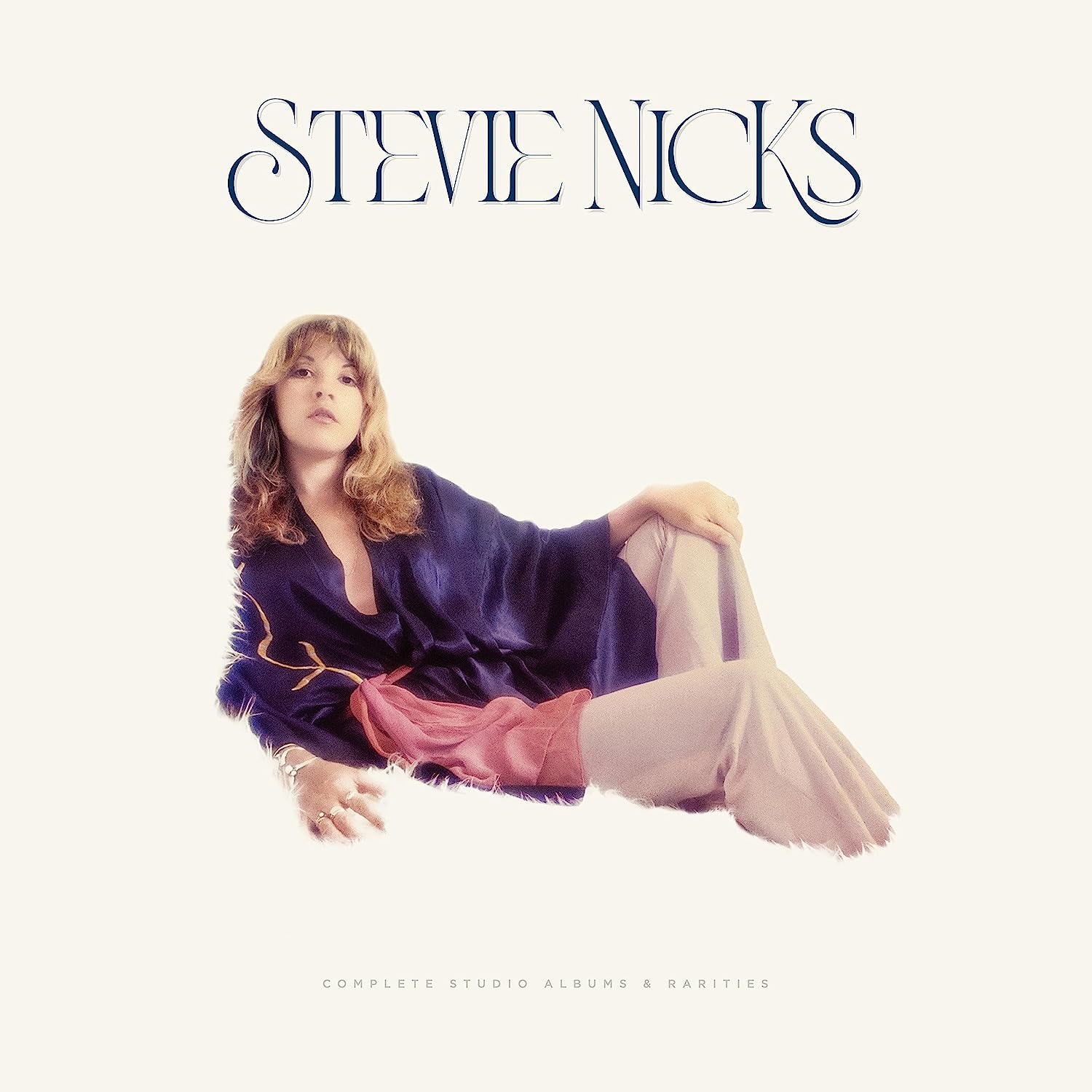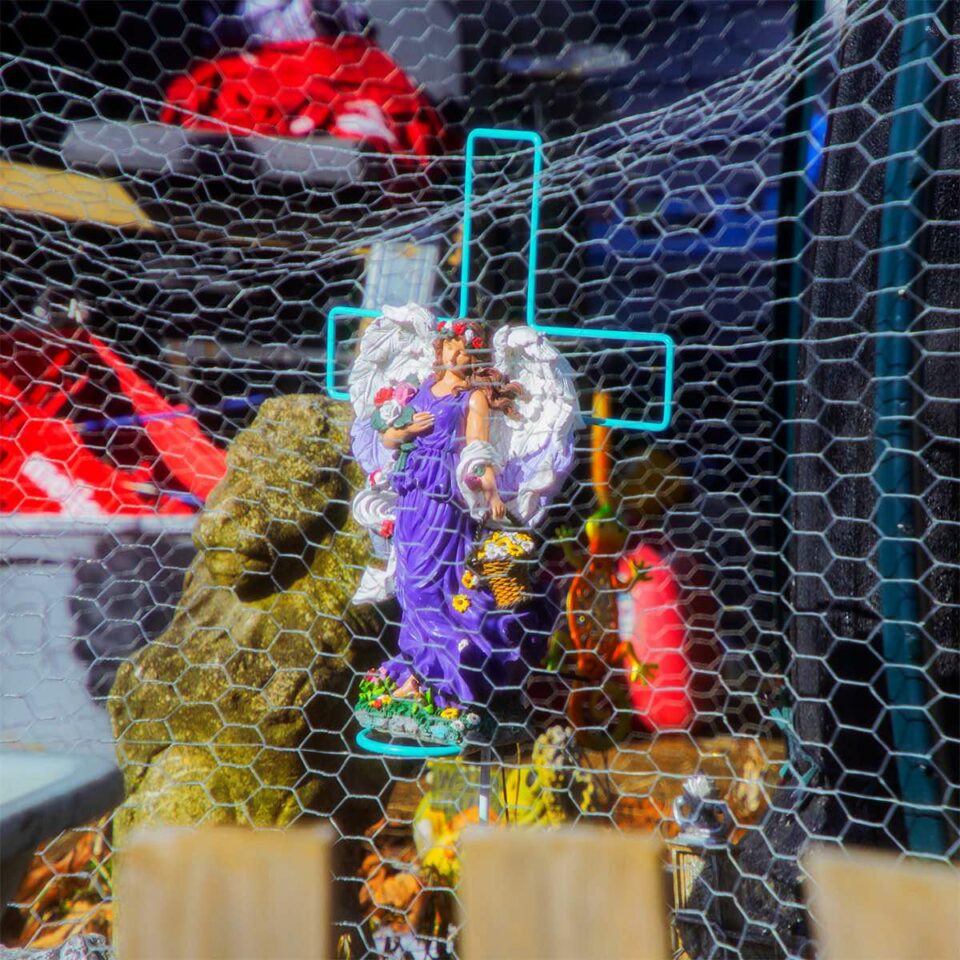Stevie Nicks
Complete Studio Albums & Rarities
RHINO
When too much of the credit for the success of Fleetwood Mac’s White Album, Rumours, and Tusk went to nasal-pop-meister Lindsey Buckingham, his ex and fellow singing songwriter Stevie Nicks did the logical thing and started a solo career. That her own output (seven albums between Bella Donna of 1981 and In Your Dreams 30 years later) out-witchy-womaned everything that the Mac did (or that Buckingham recorded alone, for that matter) after her band’s 1970s hat trick proved who truly wore the gaucho pants and the long, gauzy black dresses in Fleetwood Mac.
The spidery songwriting style she created for herself apart from Mac (yet usually Mac-affiliated) was guided by a gutsier guitar sound than Buckingham ever provided (hello, Waddy Wachtel) as well as denser arrangements (more often than not from a mix of Heartbreakers and E-Streeters), all while pushing and prodding the limits of her scratchy, plumed contralto and her youthfully sensualized lyrics. Thinking of the raspy vocal totality of her solo work as an often-sexualized, but not-too-merry mix of leather and lace scented by patchouli and speckled by emeralds, this first-ever all-oeuvre study of Nicks’ music—including 2014’s 24 Karat Gold: Songs From the Vault, a newly recorded old-song comp, and this box’s centerpiece, Rarities—is mystical (of course), fragrant, and funky in a flashy boho fashion.
While hints of a new-wave Janis Joplin top the earliest and most wearily and ruminatively romantic of Nicks’ solo albums (Bella Donna, 1983’s The Wild Heart) and songs such as “Stop Draggin’ My Heart Around,” the older Nicks gets, the more she yearns to swing (1985’s Rock a Little, ’89’s The Other Side of the Mirror) and find greater weightlessness in her lyrics. Although the oddly glossy, synth-tech Rock a Little is much better than I remember it, with the dusky, even daring likes of “The Nightmare” and “No Spoken Word” competing with a sprightly dance vibe (“I Can’t Wait”), follow-ups such as Mirror (a great soap opera title, but not a great-sounding album) and 1994’s Street Angel were heavy-handed, dull, and filled with floral refrigerator-magnet poetry.
Luckily, Nicks’ welcome to the 21st century, 2001’s Trouble in Shangri-La, finds her spacey spiritualism and raw, silken rasp in full fettle, and her melodies at their mod-pop best as she touches on hippie-ish outlaw country with The Chicks’ Natalie Maine (“Too Far From Texas”), intense tenderness (“Love Changes”), and meaningful mysticism (“Bombay Sapphires” and “Sorcerer”). And yes, this album also comes across as way better than I remember it. Nicks’ work—no matter whether it’s 40 years old or from 2011’s Mac-sounding In Your Dreams—ages like fine wine no matter what the vintage.
While the overlooked new-old music of her David A. Stewart–produced 24 Karat Gold collection gets a shimmering revisionist look-see here (it’s shockingly great hearing Nicks finish thoughts she only barely started), the Rarities collection pulls off its own surprises: from the swaying R&B of “Love’s a Hard Game to Play,” to the lost 1985 B-side cruncher “One More Big Time Rock and Roll Star,” to her most recently recorded track, the immensely soulful 2022 cover of Buffalo Springfield’s classic “For What It’s Worth.” For what it’s worth (and the price isn’t cheap for the 16-LP vinyl box), Stevie Nicks’ back pages are most desirable at twice the price.









